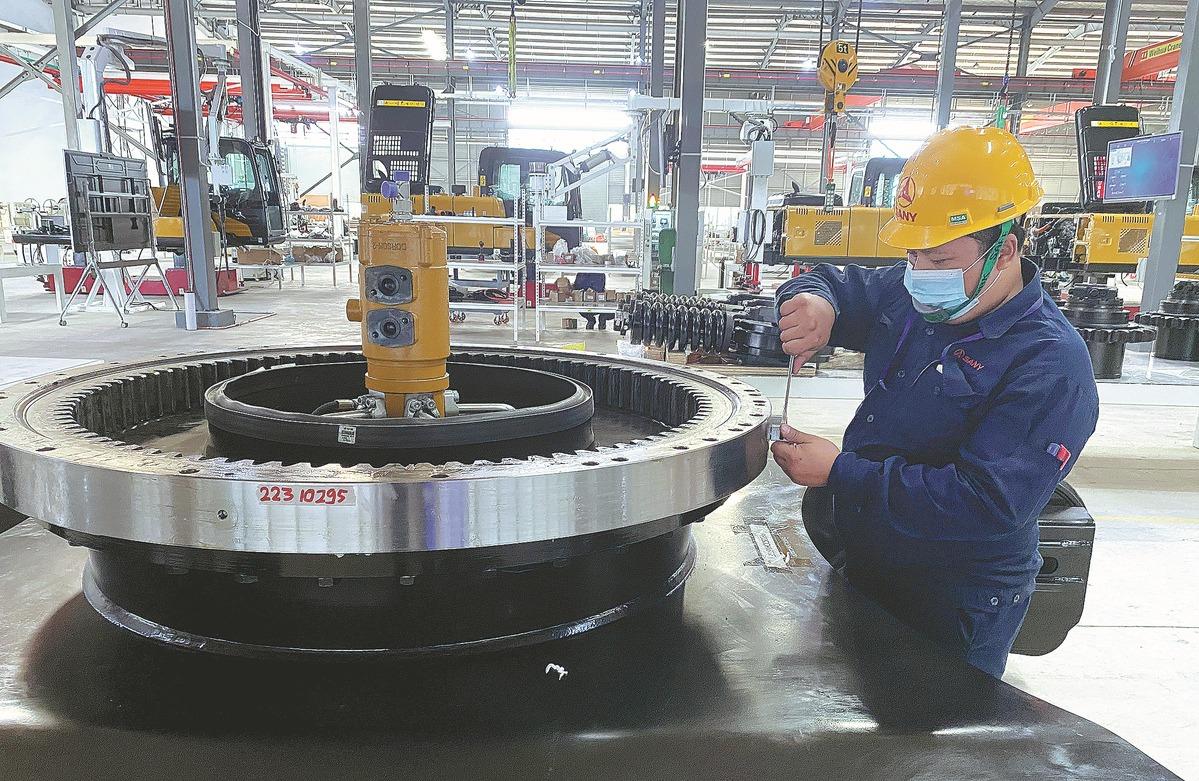Chinese firms particularly active in high-value overseas M&A activity
 A worker assembles a component at Sany's lighthouse factory in Bekasi, Indonesia, in August. (PHOTO / CHINA DAILY)
A worker assembles a component at Sany's lighthouse factory in Bekasi, Indonesia, in August. (PHOTO / CHINA DAILY)
Chinese companies are seeking new opportunities for overseas growth amid global supply chain restructuring, with ramped-up investment and a noticeable increase in high-value merger and acquisition activity overseas, experts said on Tuesday.
Reflecting on last year's investment landscape, experts underscored the substantial growth in nonfinancial outward direct investment, with a focus on sectors such as technology, power and new energy vehicles.
READ MORE: China's non-financial ODI up 18.4% in first 11 months
The remarks came after a recent report by accounting firm Ernst & Young China noted that China's nonfinancial ODI in 2023 grew 11.4 percent to $130.1 billion, among which investment in economies involved in the Belt and Road Initiative totaled $31.8 billion, up 22.6 percent year-on-year.
The country's total ODI reached $147.9 billion last year, edging up 0.9 percent year-on-year, the report said.
Notably, newly signed China overseas engineering, procurement and construction projects totaled $264.5 billion, marking a five-year high, up 4.5 percent year-on-year. Completed turnover reached $160.9 billion, indicating a 3.8 percent growth, with BRI economies contributing over 80 percent, surpassing the overall growth rate.
Zhou Mi, a senior researcher at the Chinese Academy of International Trade and Economic Cooperation, said the increase in nonfinancial ODI has directly spurred the creation of numerous new job opportunities and boosted tax revenue, thus playing a pivotal role in stimulating economic growth in recipient countries.
"China's outward investment in manufacturing and trade sectors has witnessed remarkable expansion. Over the past year or two, investment in green power and electric vehicles has surged. Moreover, there has been rapid growth in outward investment in services, particularly in logistics services for e-commerce," Zhou said.
According to the EY report, technology, media and telecom (TMT), advanced manufacturing and mobility sectors dominated overseas M&As in terms of deal value.
The power and utilities sector was the only one to witness growth in both M&A deal value and volume, said the report.
Across all sectors, Chinese companies reported a 20.3 percent year-on-year increase in overseas M&A deal value, reaching $39.8 billion, said the EY report.
Despite a decrease in the number of deals to 457 — a drop of 16.3 percent year-on-year — the presence of large transactions of which values exceed $500 million clearly rose, the EY report said. M&A activity in BRI economies surged 32.4 percent year-on-year, outpacing the overall growth rate.
Loletta Chow, global leader of EY China overseas investment network, said: "At present, Chinese enterprises have entered a new phase of global expansion, with China's technology and brands increasing their presence overseas and delving into fresh growth opportunities. Simultaneously, China's industrial transformation aligns with global trends such as digitalization, green economy and reshaping of the industrial value chain."
ALSO READ: China's non-financial ODI up 17.3% in first 10 months of 2023
Zhou from CAITEC said that the ongoing restructuring of the global supply chain presents Chinese enterprises with opportunities to align their strengths with evolving market needs. Additionally, Chinese firms are demonstrating robust global competitiveness across various manufacturing sectors. Thus many countries are actively embracing participation by Chinese firms. Furthermore, the emergence of new industries has opened up numerous opportunities for enterprises venturing abroad.
However, he said there are challenges from global economic uncertainties, geopolitical tensions, and evolving international economic and trade regulations.
"This year, the global geopolitical landscape may face more challenges, but China remains committed to its high-level policy of opening-up. Fueled by the strong drive for development among enterprises, it is anticipated that 'going global' will continue to be a key growth strategy for many Chinese companies," Chow of EY said.


